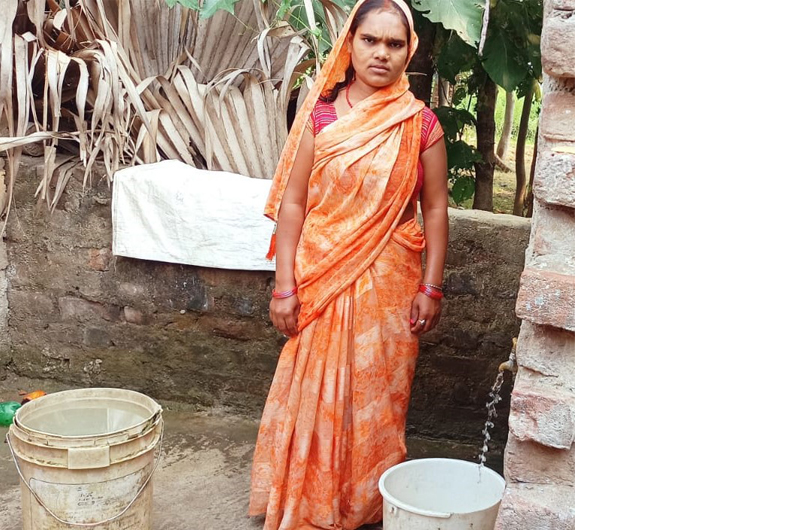Premshila Devi tells the success story of a government scheme to ensure potable water in remote rural areas in Bihar
The Central Government initiated the Har Ghar Nal Jal Yojana (tap water for every household) in 2019. The scheme has transformed rural areas. Its most positive impact has been on the health of the people, particularly women and children. Many districts of various states in the country have successfully implemented this scheme, ensuring that clean water reaches every household through pipelines. Bihar is one such state. According to an April 2022 report, 99 per cent of households in 14 out of 38 districts in Bihar have got access to clean drinking water under the scheme.
According to the website of the Ministry of Jal Shakti, in 2019, only one per cent of rural areas in Bihar had access to water through pipelines. However, just five years later, about 96 per cent of rural households in the state are now receiving clean drinking water through pipelines. The Central Government’s scheme has played a crucial role in the transformation, and a similar initiative implemented at the state level by the Bihar Government has also successfully freed rural areas from having to consume arsenic-contaminated water.
While districts like Arwal, which have fewer people, are topping the list, more populated districts like Gaya are also making progress. Uchla, a village in Gaya District, is a good example of the benefits of the scheme. People are no longer victims of contaminated water from hand pumps and they are enjoying better health.
Meera Devi (22), who got married and moved to Uchla last year, said that in her parental home, people drank water from hand pumps, resulting in constant health issues among children, but in Uchla, the situation is entirely different – due to the availability of clean water from taps, children are much healthier. Sufficient tap water for everyone is supplied for two hours every morning, afternoon and evening, and the water can be stored too, she added.

Manju Devi (35) attributes the improvement of her children’s health to the implementation of the Har Ghar Nal Jal Yojana. Though she pointed out that when electricity is not available in the village for an extended period, the taps are dry and the villagers are compelled to use the hand pump, Manju, who has completed her schooling up to Class 12, hastened to add that she is well aware of the efforts made by the government and appreciates them.
Manju’s neighbour, Lalita Devi, explains that since Gaya experiences higher temperatures than other districts in the state, the hand pumps have to draw water from very deep down, making life difficult. However, since the installation of the pipeline, there has been no problem with drinking water regardless of the weather conditions.
Almost every household in this village receives clean water under the Har Ghar Nal Jal Yojana. Manva Devi (55) reports that incidents of people falling ill due to contaminated water have drastically reduced. Children are becoming healthier, and the side benefit is the saving on medical expenses.
For the around 350 families of the Scheduled Caste Community in this village, getting tap water is no less than a dream come true. Forty-five-year-old Manorama, who belongs to the community, is specially happy that the people don’t have to pay for the water made available under the scheme.
Only a few households in Uchla, belonging to the higher castes, used to enjoy facilities like piped water, says Sanju Devi, age 36. The Scheduled Caste families had to plead with the upper classes for clean water, or depend on the hand pumps earlier, but now there is no such problem, as people of all communities have access to clean drinking water through pipelines, she says.
Lalit Paswan, a 55-year-old resident of the village, points out that there are still some families in the Scheduled Caste category in the village who have not received piped water under the scheme. However, that’s because some of the families were in joint establishments when the scheme was being implemented, and had since become nuclear units. Also, some houses were under construction. But soon, all these houses would also enjoy the benefits of the scheme. Paswan said this is the first time that the government has initiated a scheme directly impacting their lives, the effects of which were noticeable from the very first day.
(Courtesy: Charkha Features. The writer is a grassroots worker with Nirantar Trust working in Shivhar District, Bihar.)



 from Webdoux
from Webdoux